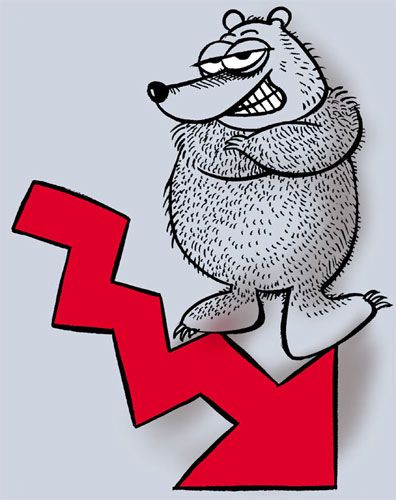 | « Back to article | Print this article |
The falling price of crude and concomitant falls in prices of refined products explain the revenue contraction, the higher GRM and better profitability.
 The initial trends in third-quarter corporate results for the period ended December 2015 indicate that little has changed for India Inc.
The initial trends in third-quarter corporate results for the period ended December 2015 indicate that little has changed for India Inc.
The growth trajectory remains flat.
Operating profits have grown moderately and net profits have declined.
Operating margins are also flat.
Debt servicing has become harder because of low nominal growth.
The early results in Business Standard's database comprise a sample of 194 companies.
Of these, 122 companies are left if sectors like information technology and financial services are excluded.
Finally there is Reliance Industries, which is so large that it causes distortions single-handedly.
RIL registered record net profits of Rs 7,357 crore (Rs 73.57 billion) (Rs 5,191 crore or Rs 51.91 billion in Q3, 2014-15), and healthy gross refining margins.
However, revenues dropped sharply, by 24 per cent to Rs 73,341 crore or Rs 733.41 billion (Rs 96,330 crore or Rs 963.3 billion in Q3 2014-15).
The falling price of crude and concomitant falls in prices of refined products explain the revenue contraction, the higher GRM and better profitability.
Including RIL, the database of 194 companies has shown a revenue contraction of 2.6 per cent, year-on-year.
If RIL is excluded, the other 193 companies under consideration have shown a reasonable 9.1 per cent increase in revenues.
If financial services and information technology sectors as well as RIL are excluded, the remaining 121 companies have shown a 5.8 per cent increase in revenues.
Operating profit has grown at 6.4 per cent for the database excluding RIL and at 7.3 per cent for the 121 companies, excluding RIL and companies in the financial services and IT sectors.
Net profits grew only 1.6 per cent for the sample excluding RIL, and actually shrank by 0.8 per cent when excluding companies in the financial services and IT sectors as well. Operating margins stayed flat at 24.4 per cent.
These results indicate that companies are surviving in a difficult environment.
Raw material costs declined 4.8 per cent, for the fourth consecutive quarter.
However, other expenses have risen significantly.
Employee costs for the database of 121 companies, excluding RIL and those in the financial services and IT sectors, have risen 7.1 per cent; interest costs have increased by a whopping 24.8 per cent.
But corporate investments actually shrank during Q3. Rural demand remains muted, going by the disappointing results from consumer-goods majors.
The higher interest costs could cause debt-servicing issues, especially in companies with high leverage.
Interest coverage ratios (operating profits divided by interest outgo) have dropped across the board and are at worryingly low levels, the lowest for 12 quarters.
The falling interest coverage ratios also gel with a wider phenomenon.
India Inc has experienced lower inflation now for over a year.
This means lower revenue growth and that makes debt-servicing difficult.
Early bird results can be deceptive, but these conform to known macro-economic trends.
The commodity crash; low inflation; moderate revenue growth; low rural demand; potential issues in debt-servicing; all these are visible.
Stock-pickers will be able to focus on companies whose results indicate they can thrive in tough environments.
But there is no real evidence of a concerted uptick in performance.